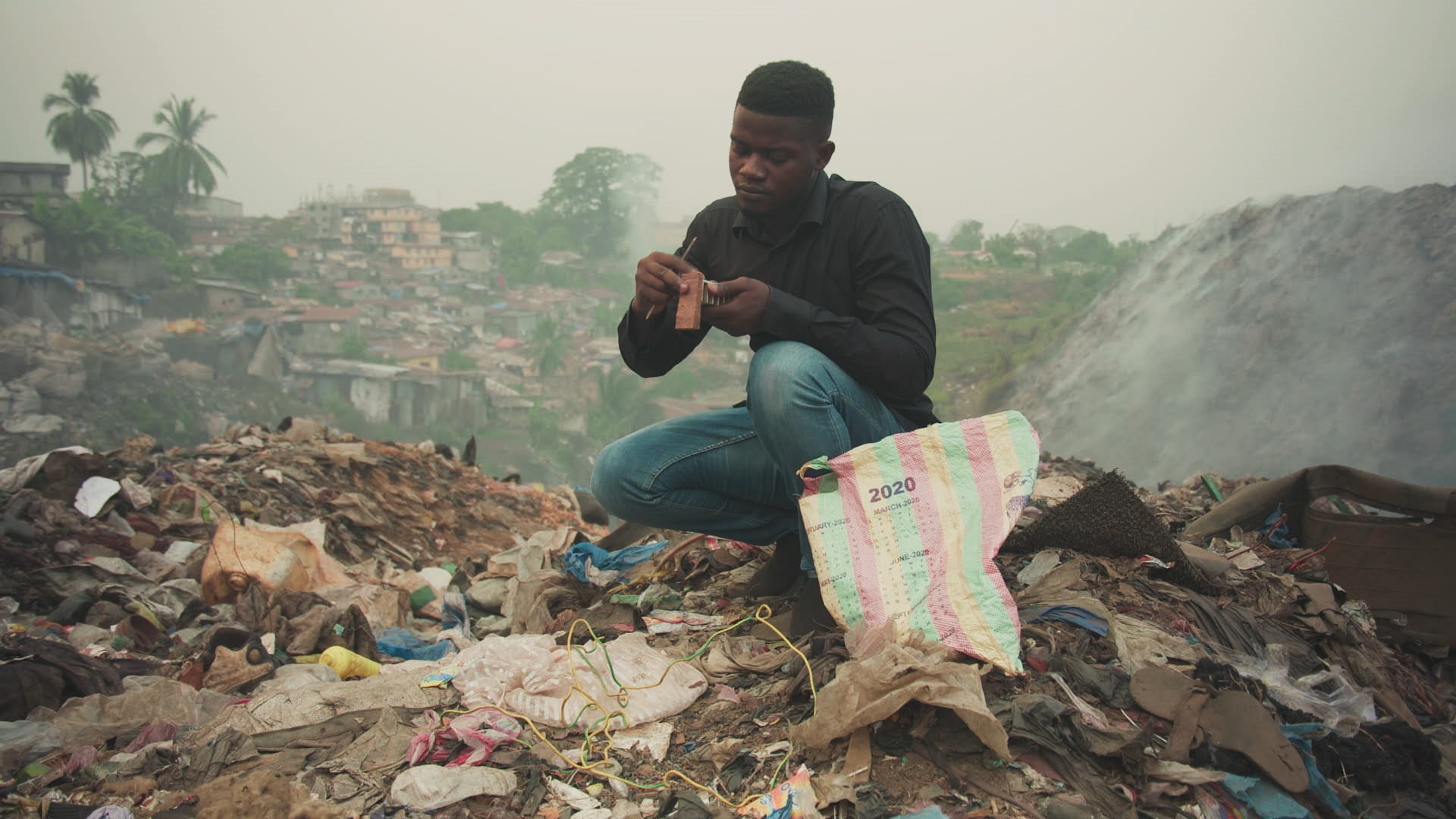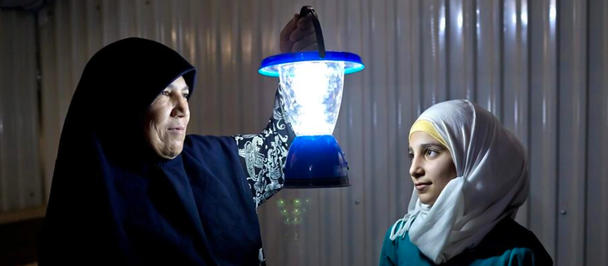Learning from the ingenuity of women and men in ‘least developed countries’
March 6, 2023

Emmanuel Alie Mansaray built Sierra Leone’s first solar-powered car entirely from waste.
As the global community gathers in Doha for the 2023 LDC5 Conference to call attention to the bold investments needed in “least developed countries” (LDCs) to grapple with accelerating economic and environmental shocks, it is a moment to take inventory of our assets. What do we have to draw on if we want to eliminate extreme poverty and get the planet on a more sustainable path?
In the drive for a fairer world, we have an -- often-overlooked -- asset: what 8 billion people around the world know about solving problems. Innovators and changemakers in the LDCs and more generally in the Global South, tend to be defined by their problems. We think this needs to change. They need to be defined by and seen for their knowledge and ingenuity. UNDP, via its Accelerator Labs Network, is actively learning from innovators in these countries.
UNDP’s Labs approach innovations from the bottom-up by learning from women and men who are closest to development challenges and who are most impacted by the climate crisis. Since its creation in 2019, the UNDP Accelerator Lab Network has surfaced over 3,000 grassroots solutions covering all 17 SDGs. Almost a third of these solutions come from LDCs. While the learning is only beginning, we are already adapting our programs based on how people solve problems like generating energy and creating value from waste.
Innovators in low-income countries show us the future of circular economies
Emmanuel Alie Mansaray is a 24-year-old self-taught engineer living in Freetown, Sierra Leone. He built the Imagination Car, Sierra Leone's first locally made solar-powered car, entirely from waste.
Emmanuel is featured in “for Tomorrow: the Documentary" a feature-length film narrated by Daisy Ridley (Star Wars) and launched by the UNDP Accelerator Labs in partnership with Hyundai Motor Company last September. This film celebrates the power of people’s innovation.
Grassroots innovations are early-stage, often home-grown solutions led by women and men who innovate in the margins. They may never have been codified or disseminated beyond their communities. These solutions are naturally frugal, grounded in a specific context and might be more relevant than top-down “solutions,” given their proximity to the problem.
Many innovators in least developed countries such as Nepal, Ethiopia, Tanzania and Togo to name a few, are taking this circular approach. They use waste such as plastic bottles, rice bran or plastic bags to make furniture, roads, even to create new buildings.
Grassroots innovators like Emmanuel show us glimpses of what a more sustainable future can look like. Their innovations inspire us at UNDP when we design circular economy portfolios at a systemic level, like in the Philippines or in Da Nang, Viet Nam.
People Powered Energy: ready to share and deploy
The question we often face when we promote frugal innovation is: can they make a difference outside of the margins? We tested this out recently while exploring how grassroots innovations could contribute to ending energy poverty. 700 million people lack access to electricity, often in Africa and LDCs. So, together with our partner the Honey Bee Network, we put the Labs on the case with the people powered energy campaign.
In 20 weeks, the Labs and their partners sourced 359 grassroots energy solutions from across different regions and energy sources (biomass, wind, solar and others). That’s about 18 solutions coming our way every week! The important point here is not the sheer number, but what we can learn from them to inform how we go about efforts to move towards universal energy access.
Common energy solutions in LDCs are cook stoves like the Bondhu Chula smoke free cook stove which saves fuel. Cookstoves are not new and have faced scaling challenges in the past. But there is evidence that they are getting more efficient and causing less pollution. What if we put our energy into scaling these types of low-cost solutions, made with inputs from LDCs?
Our explorations suggest that grassroots energy solutions are often open source and at a product stage (instead of just prototypes). If this is true, there are energy solutions coming from the Global South that are ready to be shared and deployed. Energy access is not a new agenda, but what if we amplify many small ideas instead of relying on large energy grids that are often out of reach for the last mile? If you are keen to dig into the data we've gathered, you can check out these data visualizations created in partnership with Viz For Social Good, and a group of inspired volunteers.
Getting smarter together for the people and planet
Full-scale systems transformation will require more than grassroots innovation. It will take large macro-economic reforms, such as stopping fossil fuels subsidies and investing in LDCs.
With the major setbacks on our course to the 2030 Agenda, we need to double down on learning –- and sooner rather than later –- from the innovations already being created in all countries, including those that classify as “least developed” so we can finally retire this concept.
Put simply: without learning from people who are already solving problems, we won't achieve the Global Goals. The question is how do we orchestrate this collective intelligence more strategically and at scale?
If you are interested in learning from grassroots innovations, join us. If you are also engaged in redefining who is an expert when it comes to sustainable development, we want to hear from you. Join us in this endeavour to learn from innovations in LDCs and beyond!
"In the drive for a fairer world, we have an – often-overlooked – asset: what 8 billion people around the world know about solving problems."

 Locations
Locations





